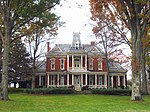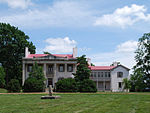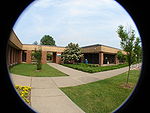Belle Meade is a city in Davidson County, Tennessee. Its total land area is 3.1 square miles (8.0 km2), and its population was 2,901 at the time of the 2020 census.Belle Meade operates independently as a city, complete with its own regulations, a city hall, and police force, but it is also integrated with the Nashville government. Developed in part on the territory of the former Belle Meade plantations, residential areas are suburban with tree-lined streets and wooded areas. The median annual income of Belle Meade residents is $195,208, which exceeds the median annual income in the U.S. by more than three times.The city's history dates back to 1807, when John Harding of Virginia purchased the Dunham's Station log cabin and 250 acres (100 ha) on the Natchez Trace near Richland Creek. He named the property Belle Meade, which is French for "beautiful meadow". Over the next few decades, enslaved African Americans built Harding's mansion, and established a thoroughbred breeding farm and cotton plantation. He conducted various service businesses on the property, including a grist and saw mill, a cotton gin, and a blacksmith shop – all primarily operated by enslaved African-Americans.Harding's son, William Giles Harding, inherited the estate in 1839. In 1866 his daughter Selene married brigadier general William Hicks Jackson, who controlled the land from 1883 and made the estate gain international recognition for its horses. In 1906, debt forced the Harding family to sell Belle Meade. Belle Meade Land Company built the first road and in 1938 developed the neighborhood that established the City of Belle Meade. The mansion was converted into a museum. On December 30, 1969, it was listed on the National Register of Historic Places.







